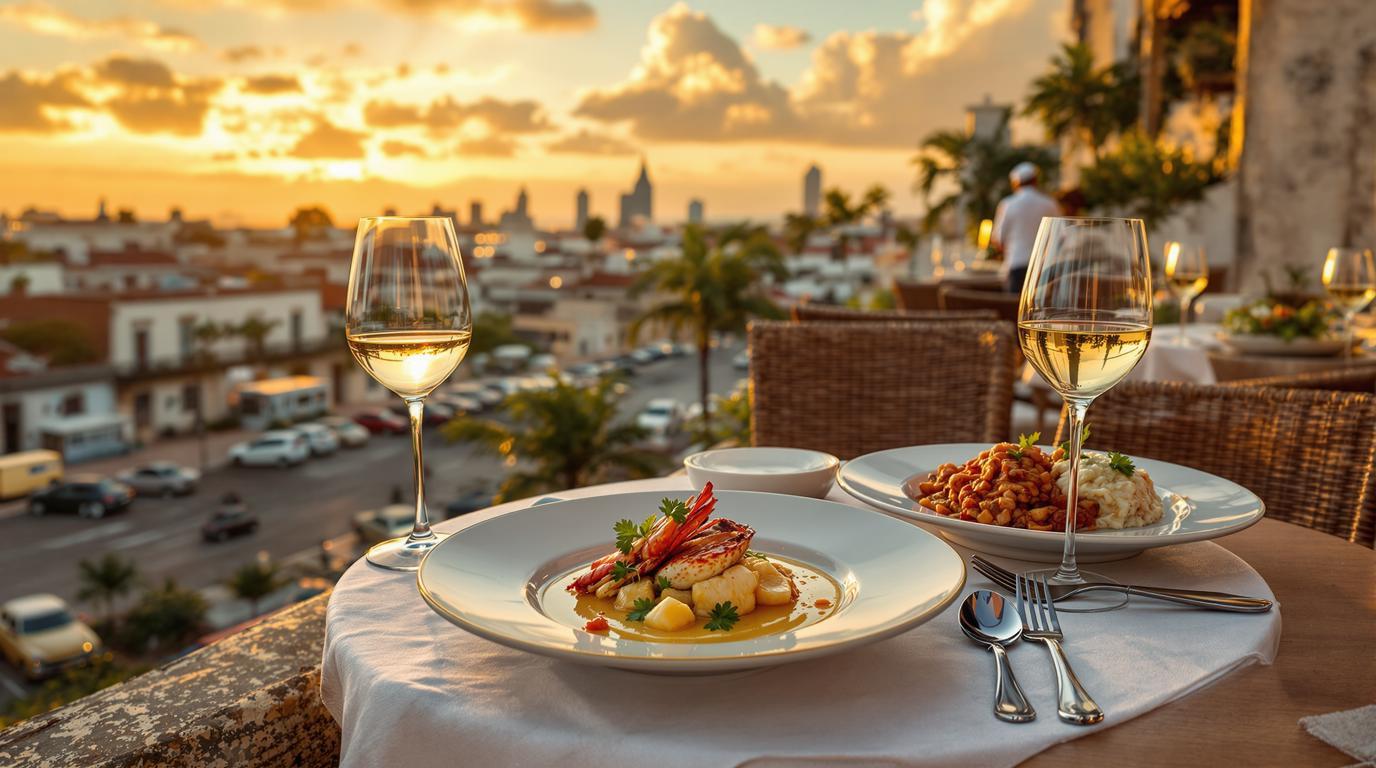Hidden Havana: Cuba’s Culinary Renaissance Beyond the Michelin Guide
A culinary capital without Michelin stars
Havana’s vibrant streets pulse with music, vintage cars, and the aromas of a culinary scene that defies expectations. While the prestigious Michelin Guide hasn’t officially rated Havana’s restaurants, the Cuban capital has undergone a gastronomic renaissance that would impress even the most discerning food critics. The absence of Michelin recognition hasn’t stopped local chefs from creating world-class dining experiences in this Caribbean gem.
Colonial-era paladares serving modern masterpieces
In Havana’s historic center, family-run restaurants called paladares occupy colonial mansions with stories as rich as their menus. La Guarida, perhaps the city’s most famous, occupies a crumbling yet majestic 20th-century building where the Oscar-nominated film “Strawberry and Chocolate” was filmed. Its rooftop offers spectacular city views while serving contemporary Cuban dishes that blend tradition with innovation.
“We create dishes that honor our grandmothers’ recipes but with modern techniques and presentations that would stand alongside any Michelin-starred restaurant,” explains Carlos Martínez, head chef at one of Havana’s top paladares.
Beyond rice and beans: Cuba’s culinary diversity
Cuban cuisine extends far beyond the stereotypical rice, beans, and pork. At restaurants like El Del Frente and Atelier, chefs craft sophisticated dishes using freshly caught seafood, tropical fruits, and locally grown vegetables. The constraints of import limitations have paradoxically spurred creativity, with chefs mastering preservation techniques and seasonal cooking that rivals any Michelin-starred establishment in Europe.
From street food to fine dining
Havana’s culinary scene spans from humble street vendors selling crispy tostones (fried plantains) to upscale restaurants like Otramaneralahabana, where elegant plating and international techniques transform Cuban ingredients. The city offers a gastronomic journey similar to hidden paradises that combine natural beauty with exceptional experiences.
Signature dishes worthy of stars
Several Havana restaurants serve dishes that would merit Michelin recognition. La Cocina de Lilliam’s lobster in vanilla sauce combines Caribbean ingredients with French technique, while Doña Eutimia’s ropa vieja (shredded beef in tomato sauce) elevates a humble traditional dish to gourmet status. These creations showcase Cuban cuisine’s sophistication, proving that exceptional dining experiences extend beyond traditional culinary capitals.
“Havana’s chefs have mastered the art of transforming simple ingredients into extraordinary dishes through passion and creativity,” notes food historian Maria Rodríguez.
Cocktail culture complements the cuisine
No culinary exploration of Havana would be complete without experiencing its legendary cocktail scene. Establishments like El Floridita (Hemingway’s favorite daiquiri spot) and Brasserie 255 offer carefully crafted cocktails that rival sophisticated wine experiences in European destinations. The perfect mojito or Cuba Libre complements the flavor profiles of local dishes.
Undiscovered by mass tourism
Despite its proximity to the United States, Havana remains relatively undiscovered by mass tourism compared to other Caribbean destinations. This makes its culinary scene feel like one of the Caribbean’s best-kept secrets. Visitors can still find authentic experiences without fighting through crowds of tourists.
A journey through history on your plate
Each meal in Havana tells a story of the island’s complex history. Spanish influences mingle with African traditions, while hints of French, Chinese, and indigenous Taíno cuisine create a unique fusion. Restaurants like San Cristobal, housed in a colonial-era mansion filled with antiques, offer diners a journey through time similar to Europe’s most spectacular historical routes.
The future of Cuban cuisine
As economic reforms continue and culinary education expands, Havana’s food scene will likely gain international recognition. The passion, creativity, and dedication of local chefs suggest that official Michelin recognition may only be a matter of time. Until then, culinary adventurers can enjoy world-class dining experiences without the crowds and prices that often accompany Michelin stars.
“We cook with our hearts and our history,” says renowned Cuban chef Enrique Suárez. “That’s something no rating system can fully capture.”
